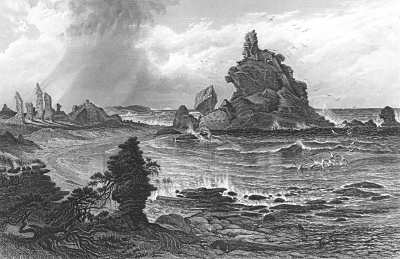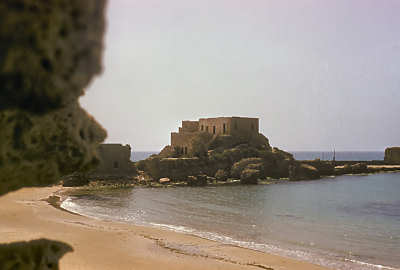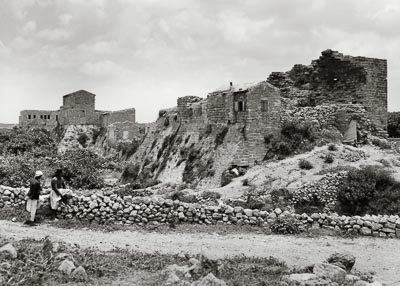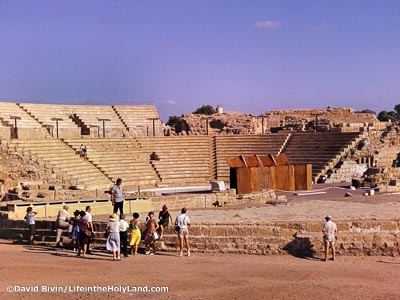
Caesarea

Source: Picturesque Palestine, vol. 3, facing p. 126
Caesarea
By the seashore, . . . a vast expanse of ground is covered with the almost indistinguishable débris of Herod's once-splendid city of Cæsarea Sebaste, so named in honour of Augustus; and within this area, in a central position close to the seashore (occupying, however, only about one-tenth of the space included within the walls of the Roman city), stand the ruins of the Crusading city which succeeded it. (Source: Picturesque Palestine, vol. 3, p. 126.)
Caesarea Harbor
CÆSAREA SEBASTE was built on the site of a place called Strato's Tower, and is minutely described by Josephus. It was planned and completed by King Herod the Great within the short space of ten or twelve years, and was inaugurated with great pomp and splendour in the twentyeighth year of his reign, B.C. 12. . . . The greatest work was the harbour, which had a double station for ships, and which Josephus compares to the Piræus at Athens. Its mole, the ruins of which still exist, extending a great distance into the sea on the southern side of the harbour . . . , was constructed of huge stones, and was originally, according to Josephus, "two hundred feet wide. (Source: Picturesque Palestine, vol. 3, pp. 126-27.)
Crusader Rampart and Moat in Caesarea
By the seashore, . . . a vast expanse of ground is covered with the almost indistinguishable débris of Herod's once-splendid city of Cæsarea Sebaste, so named in honour of Augustus; and within this area, in a central position close to the seashore (occupying, however, only about one-tenth of the space included within the walls of the Roman city), stand the ruins of the Crusading city which succeeded it. (Source: Picturesque Palestine, vol. 3, p. 126.)
Roman Theater in Caesarea
This photograph was taken in 1966. At this time, the reconstruction of the theater's upper level had yet to be completed. In fact, excavations had only just begun in the prior decade. Josephus identifies this theater as the location of King Herod Agrippa I's final speech.
See Peter and Cornelius, Jaffa (Joppa), Ramleh, Acco, Beth Shean, Nazareth, or Sea of Galilee
At BiblePlaces, see Caesarea


